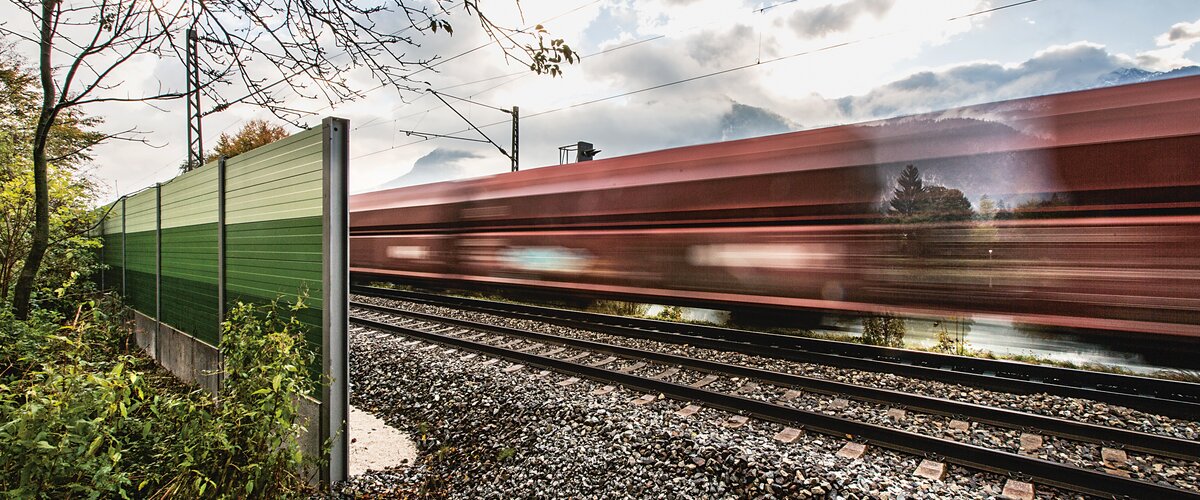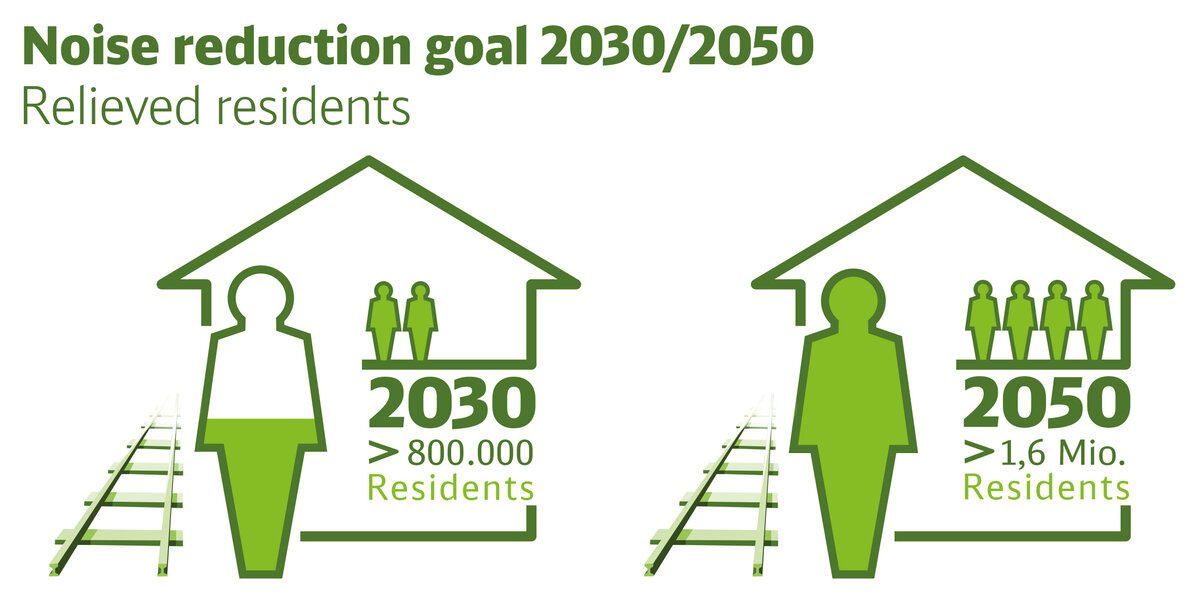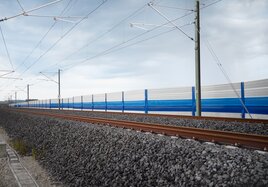Transporting goods and passengers by rail is not a silent process. In order to reduce noise and thus increase acceptance of rail transport, Deutsche Bahn has therefore set itself the goal, together with the federal government, of reducing the burden on local residents.
By 2030, Deutsche Bahn and the federal government aim to reduce rail noise for more than 800,000 residents as part of their noise abatement program. That is more than half of all residents who currently live along noisy rail lines. And by 2050, rail noise will be reduced for all affected residents.
To achieve the noise protection target with the milestones of 2030 and 2050, Deutsche Bahn is focusing on two pillars. Pillar one reduces the noise generated by improving noise protection on the infrastructure. Pillar two reduces noise directly on the vehicles.
Pillar 1: Noise protection on infrastructure
Deutsche Bahn is providing residents with lasting and noticeable relief from rail traffic noise through noise protection measures on infrastructure. Specifically, noise barriers are being built along the tracks and homes are being equipped with soundproof windows or other noise-reducing measures. This is based on the federal government's voluntary noise remediation program.
Pillar 2: Noise protection on vehicles
Since the end of 2020, DB Cargo's entire active freight car fleet in Germany has been equipped with whisper brakes. To this end, existing cars have been continuously retrofitted with quiet composite brake pads and new cars with quiet technology have been purchased. DB Cargo's electric locomotives in Germany have also been equipped with quiet braking systems since 2024.
100
%
converted freight cars
In addition, Deutsche Bahn plans to phase out DB Cargo's older 232 and 233 series diesel locomotives with noisy gray cast iron block brakes by 2030.
Research and development
In order to gain new insights into noise protection measures for infrastructure, Deutsche Bahn is involved in various research and development projects and is testing innovative products. For example, DB has teamed up with the start-up Phononic Vibes to develop an innovative solution for a transparent noise barrier. The so-called MetaWindow blends in visually with its surroundings and has sound-absorbing properties comparable to those of conventional noise barriers. The transparent walls are being used for the first time in an operational trial along the S4 line in Hamburg.



